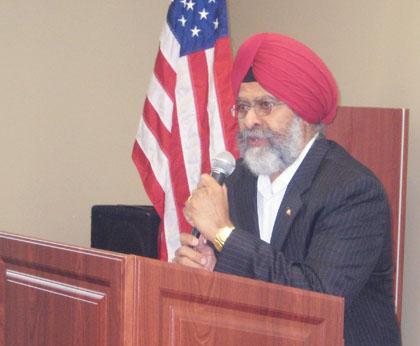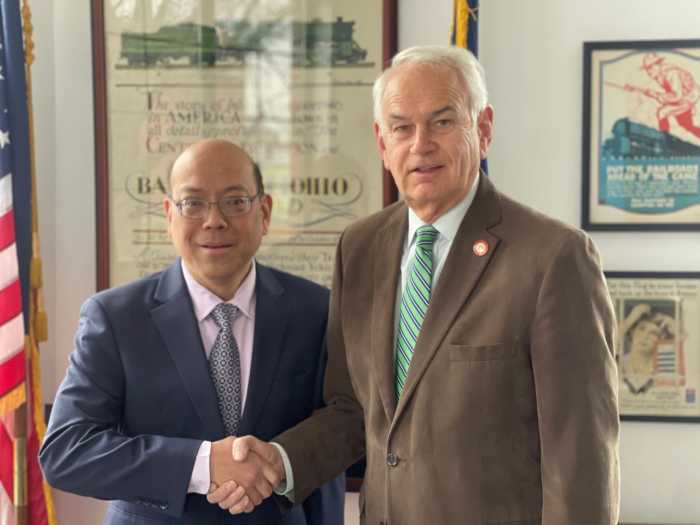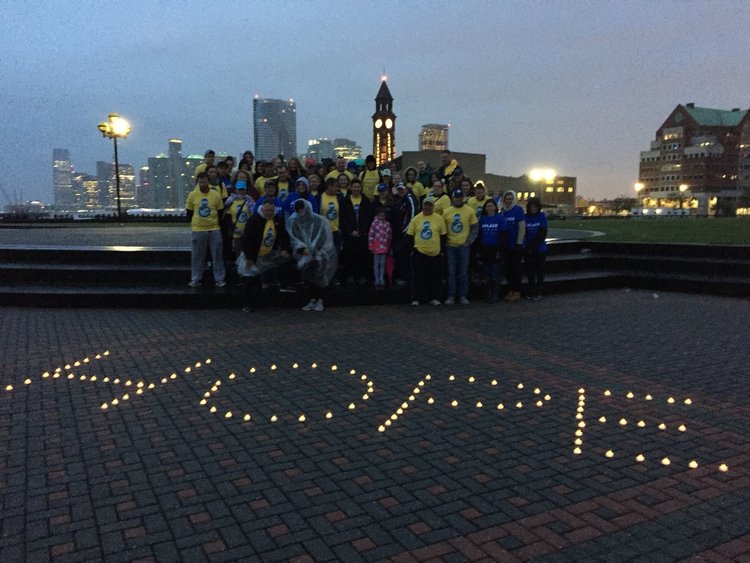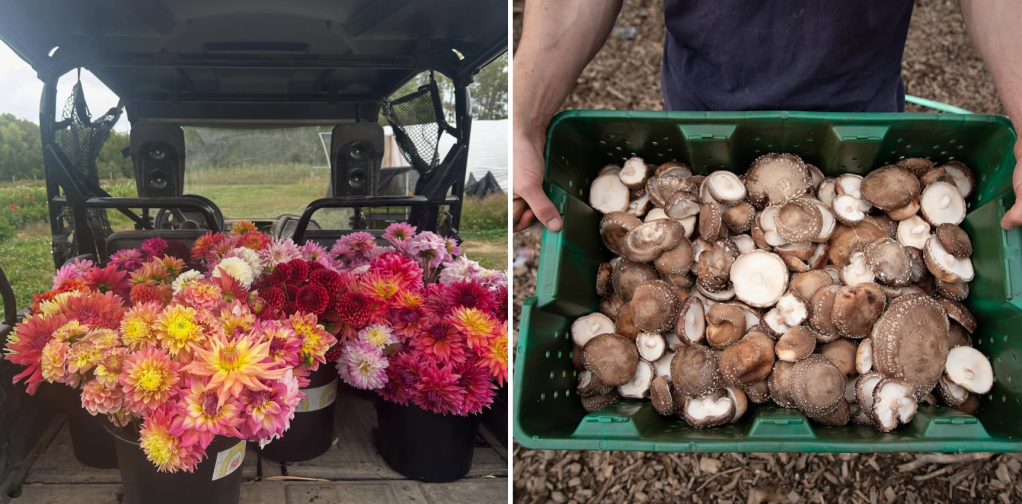By Howard Koplowitz
Indian community leaders met with civic leaders in Glen Oaks last week over a meal of goat curry and other Indian dishes to foster understanding between immigrants and whites.
“We are making a humble effort to bring our communities together so we can understand each other,” said Swaranjit Singh, one of the organizers of the meeting and a City Council candidate. “We have differences in our communities because we have differences in our culture.”
“We are the new kids on the block,” Singh said, referring to southeast Asian immigrants in northeast Queens. “Whatever the difference gap is there, we have to fill that gap to make it a better community.”
Koshy Thomas, another organizer of the meeting, said the get−together was spurred by articles in TimesLedger Newspapers and The New York Times about plans by a consortium of Indian−born investors to build a hotel at the former Frozen Cup site in Bellerose.
At a Community Board 13 meeting, one of the investors, Mike Patel, briefed the board about the plans for the three−story hotel when one member said he was concerned the building would be used for “people from your country” and others questioned whether he was the same Patel who owned a convenience store on Hillside Avenue. Patel is a common name among Indians.
Floral Park native Emy Mary Kuriakose, a daughter of Indian immigrants, gave a PowerPoint presentation chronicling the history of immigration in the United States and provided U.S. Census statistics on Asians to the civic leaders.
Kuriakose, 26, said when Indians come to America, “we are bringing a lot of our culture with us.”
“At the same time, we cherish our culture very much, but we love being a part of this country as anyone,” she said.
She noted that like the United States, India has citizens who belong to six major religions — Hindus, Jains, Sikhs, Christians, Jews and Muslims — and languages, but English unifies the country.
“When you see an Indian walking down the street, you might not know exactly where they’re from,” she said.
She told attendees that Indians and Filipinos earn the most among Asian immigrants in America because large sections of their population are skilled workers.
“The one thing we heard growing up is, ‘We don’t care what you do as long as you do good in school,’” Kuriakose said.
She said taxi drivers, doctors and nurses are some of the most popular occupations for Indians in the United States.
“We have our entrepreneurs — however small and however large,” Kuriakose said, as images of Apu, the fictional Indian convenience store owner from the TV show “The Simpsons” and Pepsi CEO Indira Nooyi were displayed, drawing laughs from the civic leaders.
Bruno DeFranceschi, president of the North Bellerose Civic Association, said he learned a few things from the presentation.
“I didn’t realize they had five different religions,” he said. “I didn’t know there were so many southeast Asians” in the country.”
DeFranceschi even ignored his anxieties about what the Indian food would do to his stomach and indulged.
“I still can’t get used to their spices,” he said.
Glen Oaks Village President Bob Friedrich, who is running against Singh and state Assemblyman Mark Weprin (D−Little Neck) for the Council seat, said he considered Singh “a friend.”
“Swaranjit has a great message,” Friedrich told the crowd. “Swaranjit and I are trying to show the city that two candidates can come together for the greater good of the community.”
Weprin also commended Singh for helping to organize the event to bring different cultures together.
“This is almost like something you’d see in a Norman Rockwell painting because it’s people getting together instead of screaming,” he said. “We have people from countries who hate each other who live together in Queens and that’s a beautiful thing.”
Reach reporter Howard Koplowitz by e−mail at hkoplowitz@cnglocal.com or by phone at 718−229−0300, Ext. 173.


































